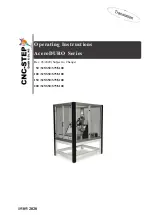
This ASIC operates in either master or slave mode. In master mode, the ASIC allows ports access to the bus
based on a priority level of normal, high, or critical. In slave mode, each port must post a request to each
SAMBA ASIC, negotiate local port decisions, and arbitrate requests with the Supervisor Engine’s SAMBA
ASIC.
The Crescendo Processors
Although we have ASICs to do some of the hard work of the processors, processors still must be involved to
handle the more dynamic administrative items. They carry the intelligence behind the frame−switching
process. Inside the Crescendo Interface Internetwork Operating System (IOS) switches, the processors
connect to a bus; the bus in turn connects to other ASICs and processors inside the switch. In the following
sections, I will examine the processors listed here and their assigned functions. You will find these processors
in the Crescendo Interface Catalyst switches:
Line Module Communication Processor (LCP)
•
Master Communication Processor (MCP)
•
Network Management Processor (NMP)
•
LCP
The Line Module Communication Processor (LCP) can be found on each line module in the switch. This
ASIC’s responsibility is to provide communications for access to the Master Communication Processor
(MCP) located on the Supervisor Engine.
The LCP automatically boots from read−only memory (ROM) and is an 8051 processor. Immediately upon
boot up, the ASIC forwards an information package called a Resetack to the MCP. Resetack includes
information regarding the switch’s boot diagnostics and module information. This information is then
forwarded from the MCP to the Network Management Processor (NMP).
MCP
The Master Communication Processor (MCP), which is sometimes called the Management Control Processor,
uses a serial management bus to communicate between the NMP on the Supervisor Engine module and the
LCP on the individual line cards located in the switch. The MCP also has a secondary job: to test and check
the configuration of the local ports, control of local ports, downloading of runtime code, and performing
continuous port diagnostics. This ASIC handles the diagnostics and obtains the usage statistics of the
on−board memory, ASICs, Local Target Logic (LTL), and Color Blocking Logic (CBL).
NMP
The Network Management Processor (NMP) is used to control the system hardware, configuration, switch
management, the Spanning−Tree Protocol (STP) (discussed in Chapter 10), and diagnostic functions.
Crescendo Logic Units
Logic units provide logic−based forwarding by VLAN, MAC address, or port assignment. The Catalyst
Crescendo Interface switches contain the following logic units:
Arbiter (ARB)
•
Local Target Logic (LTL)
•
Color Blocking Logic (CBL)
•
Remote Network Monitoring (RMN)
•
71
Summary of Contents for Catalyst 1900 Series
Page 1: ......
















































